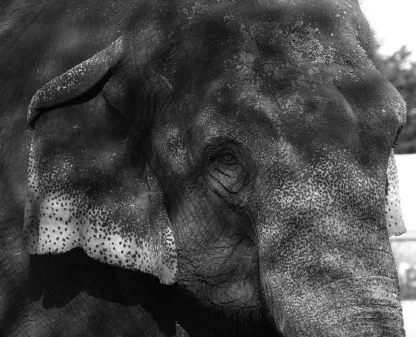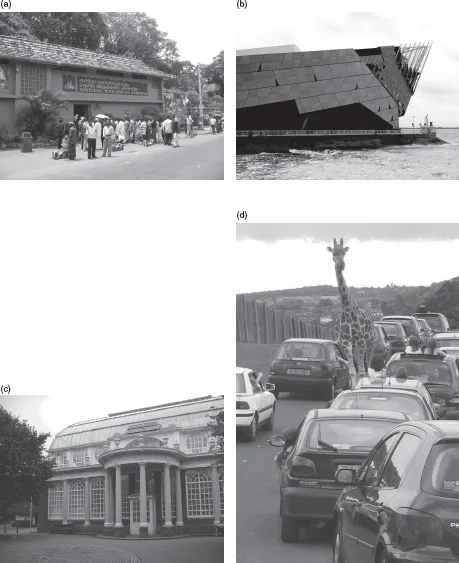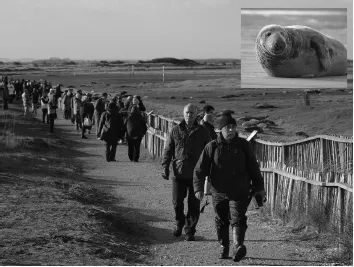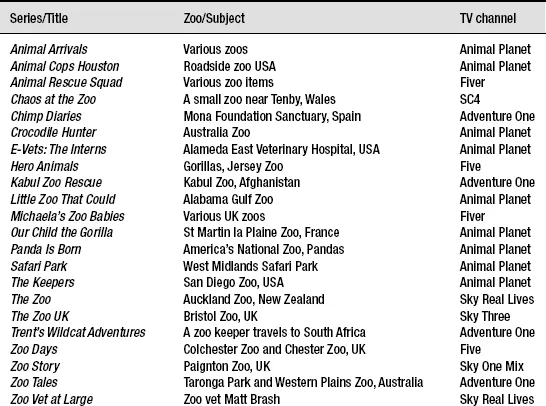![]()
PART 1
HISTORY, ORGANISATION AND REGULATION
Part 1 of this book provides background information about zoos by examining their historical development, their organisation at national, regional and international levels, the legal regulation of zoos, the ethics of keeping animals in zoos, and some general principles of wildlife conservation.
![]()
CHAPTER 1
THE PURPOSE AND POPULARITY OF ZOOS
Walking in the Zoo, walking in the Zoo, The O.K. thing on Sunday is the walking in the Zoo.
Lyrics of a song sung by Alfred Vance (Victorian music-hall artist, 1867)
1.1 INTRODUCTION
Zoo biology is a relatively new discipline. Prior to 1982 there was no academic journal specifically dedicated to the scientific study of zoo animals. The study of animal welfare and the biology of zoo animals is an increasingly important component of college and university courses, and the work of zoo keepers is becoming increasingly scientific. The purpose of this book is to provide an introduction to the biology of animals in zoos. In addition it considers other aspects of zoos which are important in understanding how zoos have evolved, how they function and their role in conservation. Before we can begin to study zoos we need to define what a zoo is.
1.2 WHAT IS A ZOO?
The term ‘zoo’ is an abbreviation of zoological gardens and was probably first used as an abbreviation for the Clifton Zoo in Bristol, England, in 1847. In 1867 a music-hall song called Walking in the Zoo, sung by Alfred Vance, popularised the use of the term.
In this book ‘zoo’ is taken to encompass a very wide range of institutions, reflecting the legal definition used within the European Union:
…“zoos” means all permanent establishments where animals of wild species are kept for exhibition to the public for 7 or more days a year… Council Directive 1999/22/EC (Zoos Directive), Article 2
This definition encompasses traditional zoos, drive-through safari parks, aviaries, snake parks, insect collections, aquariums, birds of prey centres, and all manner of other animal collections which are open to the public, but excludes pet shops, circuses and laboratories that keep animals (Fig. 1.1). Other dictionary and legal definitions of a zoo are listed in Box 1.1.
1.2.1 What’s in a name
In the minds of many people, the term ‘zoo’ has a strong association with animals being kept in poor conditions in old-fashioned iron cages. Some zoos have adopted new names in an attempt to disassociate themselves from these outdated notions and to emphasise their role in wildlife conservation and environmental education. Paignton Zoo has become Paignton Zoo Environmental Park, Jersey Zoo is now Durrell (named after its founder) and Marwell Zoo has been renamed Marwell Wildlife. However, many famous zoos show no sign of following this trend. Like traditional zoos, modern aquariums have begun to turn their attention to conservation. To reflect this, the New York Aquarium changed its name to the Aquarium for Wildlife Conservation in 1993.
1.3 THE INCREASING PUBLIC INTEREST IN WILDLIFE
There is considerable evidence of an increase in public interest in wildlife, zoos and conservation. In the last 40 years there has been a spectacular increase in the membership of organisations concerned with the protection of wildlife and wild places (Table 1.1.).
Table 1.1 Membership of selected conservation organisations
Sources: Church (1995), RSPB (2010), WWF (2010), Sierra Club (2010), Wildlife Trusts (2010) and FOE (2010).
| Royal Society for the Protection of Birds (RSPB) | 98,000 | >1,000,000 |
| WWF (UK) | 12,000 | 168,417 |
| WWF (Worldwide) | Unknown | c.5,000,000 |
| Sierra Club | Unknown | 1,300,000 |
| Greenpeace | 30,000 (1981) | 2,900,000 (2007) |
| Wildlife Trusts (formerly the Royal Society for Nature Conservation) | 64,000 | 791,000 |
| Friends of the Earth | 1,000 | 100,000 |
People who spend the majority of their lives in urban areas seek out opportunities to observe animals in the wild. In Liverpool, the Royal Society for the Protection of Birds (RSPB) organises cruises around the Mersey Estuary for its members and other bird-watchers (Fig. 1.2). Every year, during a few weeks in autumn and winter, over 60,000 people visit the colony of grey seals (Halichoerus grypus) at the Donna Nook National Nature Reserve in Lincolnshire, England, when they come ashore to have their pups (Fig. 1.3). During Easter 2010, some 45,000 people visited Lake Hornborga in Sweden to witness the annual return of over 12,000 migrating Eurasian cranes (Grus grus).
Before the ownership of televisions was widespread films such as Where No Vultures Fly (1951) – about one man’s struggle to establish a national park in East Africa – and Born Free (1966) – the true story of Elsa the lioness and George and Joy Adamson – drew the attention of the cinema-going public to the plight of African wildlife. The stars of Born Free, Bill Travers and Virginia McKenna, went on to found the pressure group Zoo Check (see Section 6.2.2.3).
Nowadays, wildlife documentaries are increasingly popular among television viewers and, in recent years, there has been an increase in the number of TV programmes about the work of vets and zoo keepers. In 2001, a total of 2284 TV programmes were broadcast which had ‘wildlife’ in the title or in the description of the programme. In 2008 this had increased to 6983. Only 196 programmes with ‘zoo’ in the title or description were shown in 2001, but by 2008 this had increased to 2119. Although many of these programmes were episodes of series and many will have been repeated on different channels – the number of which increases relentlessly – nevertheless there has been a spectacular increase in the amount of broadcast time devoted to this type of programme, and this must reflect a greater public interest (Table 1.2.). Twelve million people watched the BBC’s Planet Earth series, narrated by David Attenborough, and it received the highest audience appreciation score of any British programme on TV in 2006 (BBC, 2007).
Table 1.2 Examples of recent TV programmes about zoos
Box 1.1 What is a zoo? – some dictionary and legal definitions
Some dictionary definitions:
The Concise Oxford Dictionary (1976)
Zoological garden – public garden or park with a collection of animals for exhibition or study.
Collins Dictionary and Thesaurus (2000)
Zoo – a place where live animals are kept, studied, bred, and exhibited to the public.
Some legal definitions:
European Union
Zoos Directive (Council Directive 1999/22/EC of 29 March 1999 relating to the keeping of wild animals in zoos)
England
Zoo Licensing Act 1981, as amended by the Zoo Licensing Act 1981 (Amendment) (England and Wales) Regulations 2002 (SI 2002/3080)
(2A): This Act applies to any zoo to which members of the public have access, with or without charge for admission, on seven days or more in any period of twelve consecutive months.
United States of America
Animal Welfare Act 1966 (9 Code of Federal Regulations, Ch. 1)
Arizona State, USA (Arizona Revised Statutes, 17-101)
Australia
New South Wales, Zoological Parks Board Act 1973
India
Wildlife (Protection) Act 1972
Biography 1.1
Sir David Attenborough (1926–)
David Attenborough is a naturalist, author and broadcaster whose name is synonymous with the production of high quality wildlife documentaries. His highly acclaimed BBC series include The Life of Mammals, The Life of Birds, Life in the Undergrowth, Planet Earth, The Blue Planet, Life in the Freezer, Life in Cold Blood and Planet Earth. Although Attenborough does not generally film captive animals, some scenes, such as one of a polar bear inside its den, were recorded in a zoo because of the techn...





